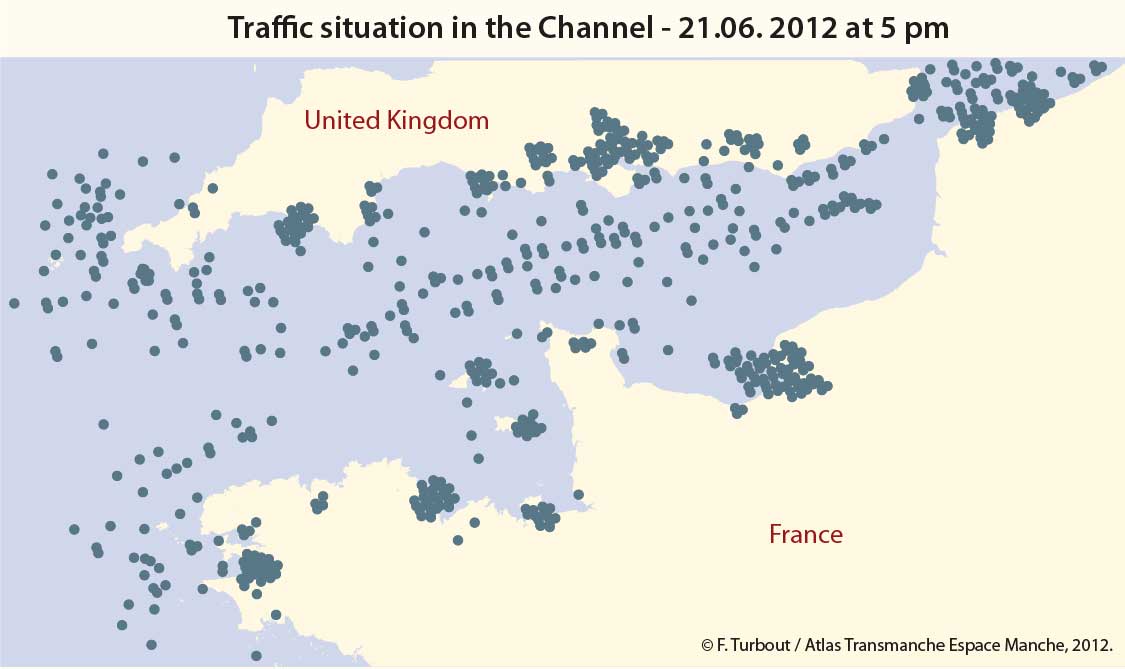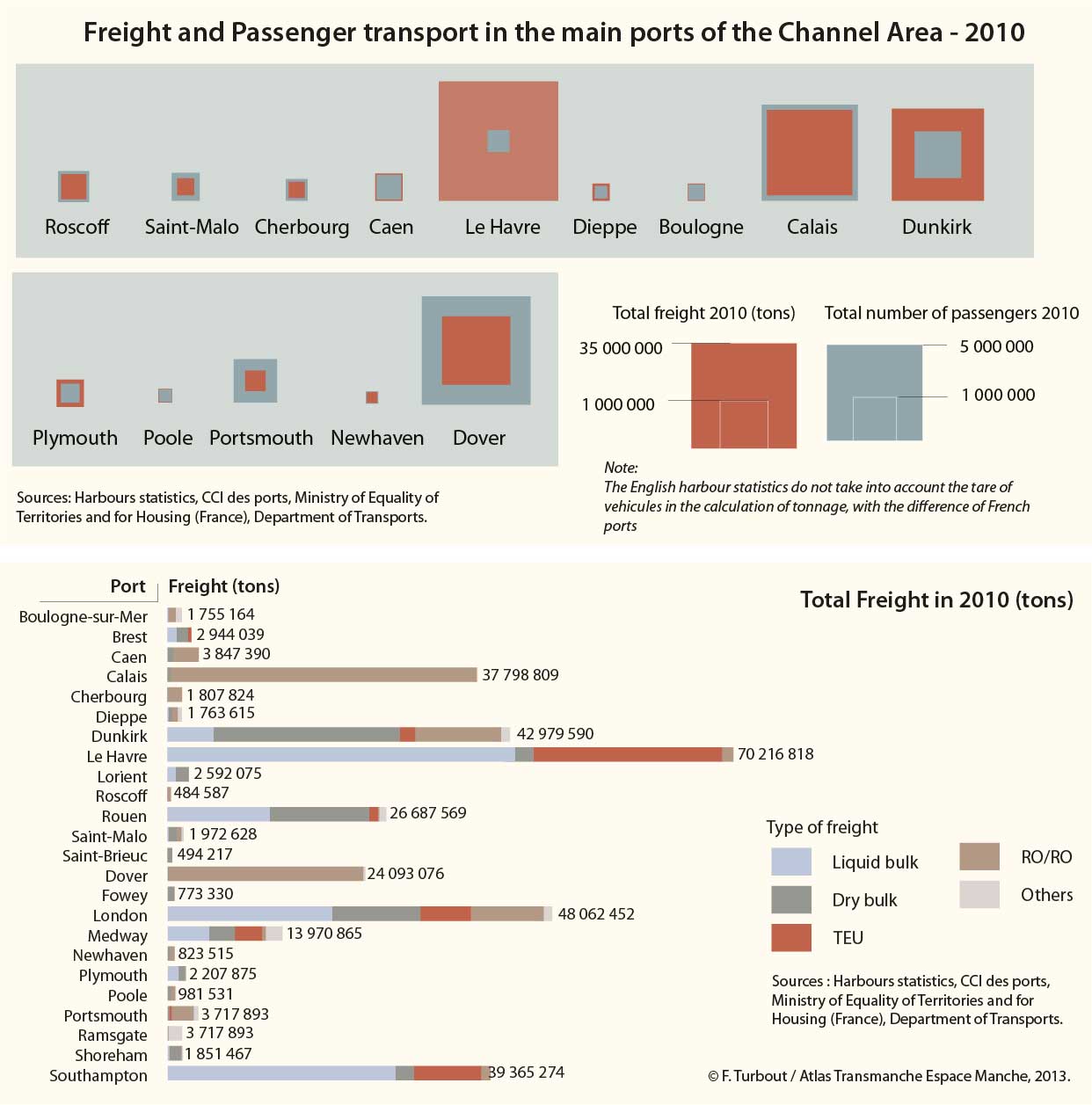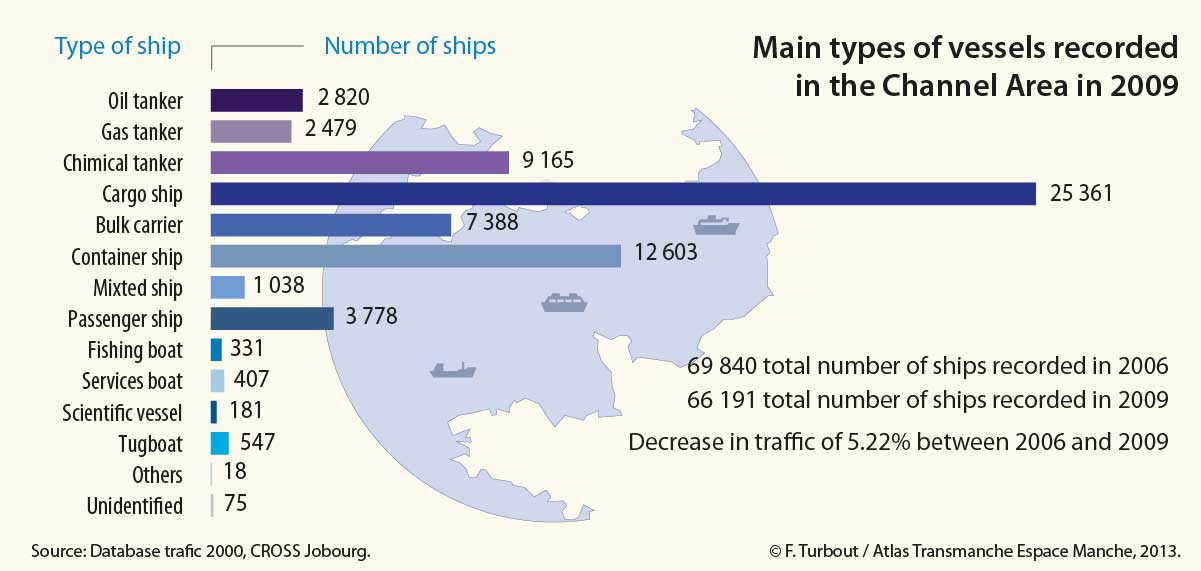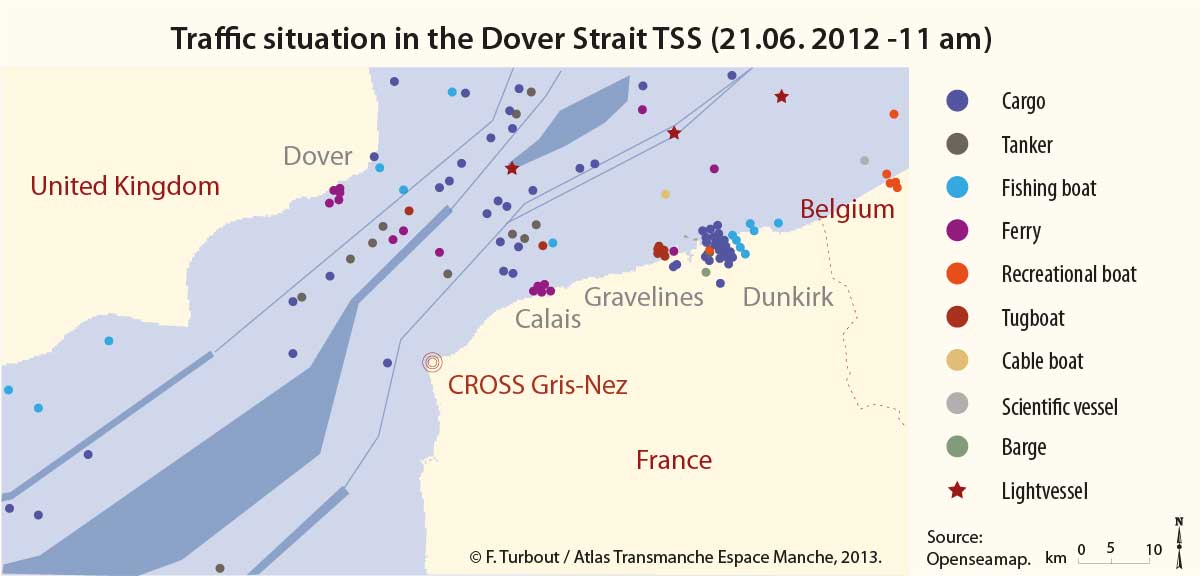

 Maritime
Maritime
Ten minutes have elapsed, during which time three ships have reported one after another to the Jobourg CROSS surveillance authority in the north of the Cotentin peninsula. Every day around 430 ships report in as they enter or leave the Channel to the CROSS centres in Le Corsen, Jobourg or Gris-Nez. The Channel is one of the world's busiest maritime thoroughfares.
On average, one lorry on board a ferry crosses the Channel every five seconds, while a ship enters or leaves this sea passage every three minutes. Cargo-boats, container ships, oil and chemical tankers ply the Channel incessantly, along designated shipping lanes as part of an obligatory traffic separation scheme (TSS), first introduced in 1967 in the Dover Strait but only enforced over the whole length of the Channel in 1977. These routes only appear on marine charts and must be taken by both incoming and outgoing ships. In both directions, these two routes are crossed orthogonally by heavy ferry traffic, with over 120 rotations daily, between the cross-Channel ports. Fishing boats sail up and down between these freight and passenger ships whilst yachting enthusiasts head out for a few hours or days of regatta in this immensely popular sea basin – one of the world's busiest for nautical activities and leisure cruising. In amongst all these activities, a dredger purposefully extracts aggregate.
This small 'inland' sea – a veritable funnel of currents and winds – is a sea corridor of global importance and the obligatory route for accessing the Belgian and Dutch ports of the 'Northern Range' and, even those further north, towards the Baltic. With shipping movements criss-crossing it in every direction, the Channel traffic is monitored and watched round the clock. The traffic is often so heavy that waiting areas hold ships at the entrance to the largest ports on both sides of the Channel so as to help them to keep moving.
This global maritime corridor is a susceptible, vulnerable and fragile environment where a myriad of human activities competes both on the sea and at the interface with the land, all with differing interests, which are sometimes in conflict. Taking account of them all as a totality, whilst recognising their individual specificities, may help to better understand the future economic, social, environmental and political stakes in question.
Traffic in the Channel
The Channel is one of the busiest corridors of maritime traffic in the world. After entering the Channel it usually continues on beyond the Strait – only a small proportion of it drops anchor at the various ports within the Channel itself.
In 2010, 333.4 million tons of freight passed through the various ports of the area and some 33.2 million passengers travelled on one of the cross-Channel ferry companies.
Freight transport largely focuses on four ports – of which the two busiest (Le Havre in France and Southampton in England) account for 33% of cross-Channel freight traffic between them. Major disparities in terms of tonnage transported between ports, stem from both the type of freight transported and the specialization of the ports in question. Accordingly, all of the ferry ports see transits of between one and four million tons of freight a each year - with the exception of Calais and Dover which registered between 25 and 37 million tons of freight in 2010. The goods transported are mainly petroleum and gas products and, more generally, liquid bulk cargo. Containers (44.3 million tons) and Ro-Ro traffic (94 million tons) need to be added to this total. Solid bulk cargo is dominated by cereals, whilst agricultural products lie in fourth place.
However the Channel ports are not just concerned with trading, and for centuries have also been points of arrival and departure for travellers. 17 million passengers have been counted on the French side and a little over 16 million on the British side. Some 91 000 people on average cross the Channel each day. More than 70% of these passengers pass through Dover and Calais, with the Dover-Dunkirk and Portsmouth-Caen lines proving the next most popular. On average, 120 ferry rotations take place on a daily basis on the twelve regular cross-Channel lines. Many of these are concentrated around the Strait where the fierce competition has created a make-or-break situation for companies vulnerable in the face of economic uncertainly. LD Lines has gradually taken the lead in the central Channel area, while Brittany Ferries remains dominant in the Western Channel with 40 years of service already in this stretch of the sea.
Traffic using the Channel Tunnel is steadily picking up, with 9.6 million passengers and almost 13 million tons of freight passing through in 2011.
The sheer volume of goods and people crossing this maritime zone every day underlines the great importance of this economic and trading axis within the immediate hinterlands of the major European capitals of London and Paris.
In the future, technological developments remain crucial and unavoidable as does the opening up of new maritime routes, the growing global competition, all of which is likely to impact on the character of this maritime corridor.


top
















